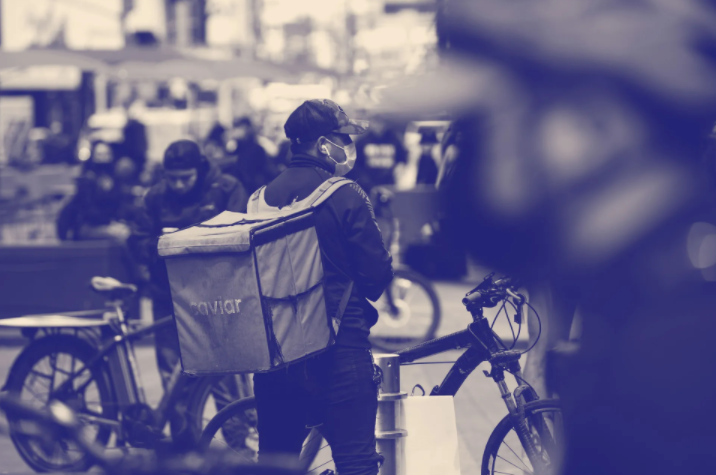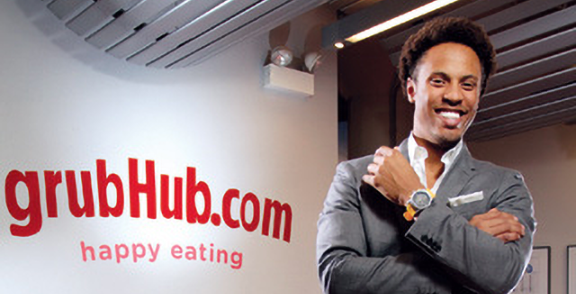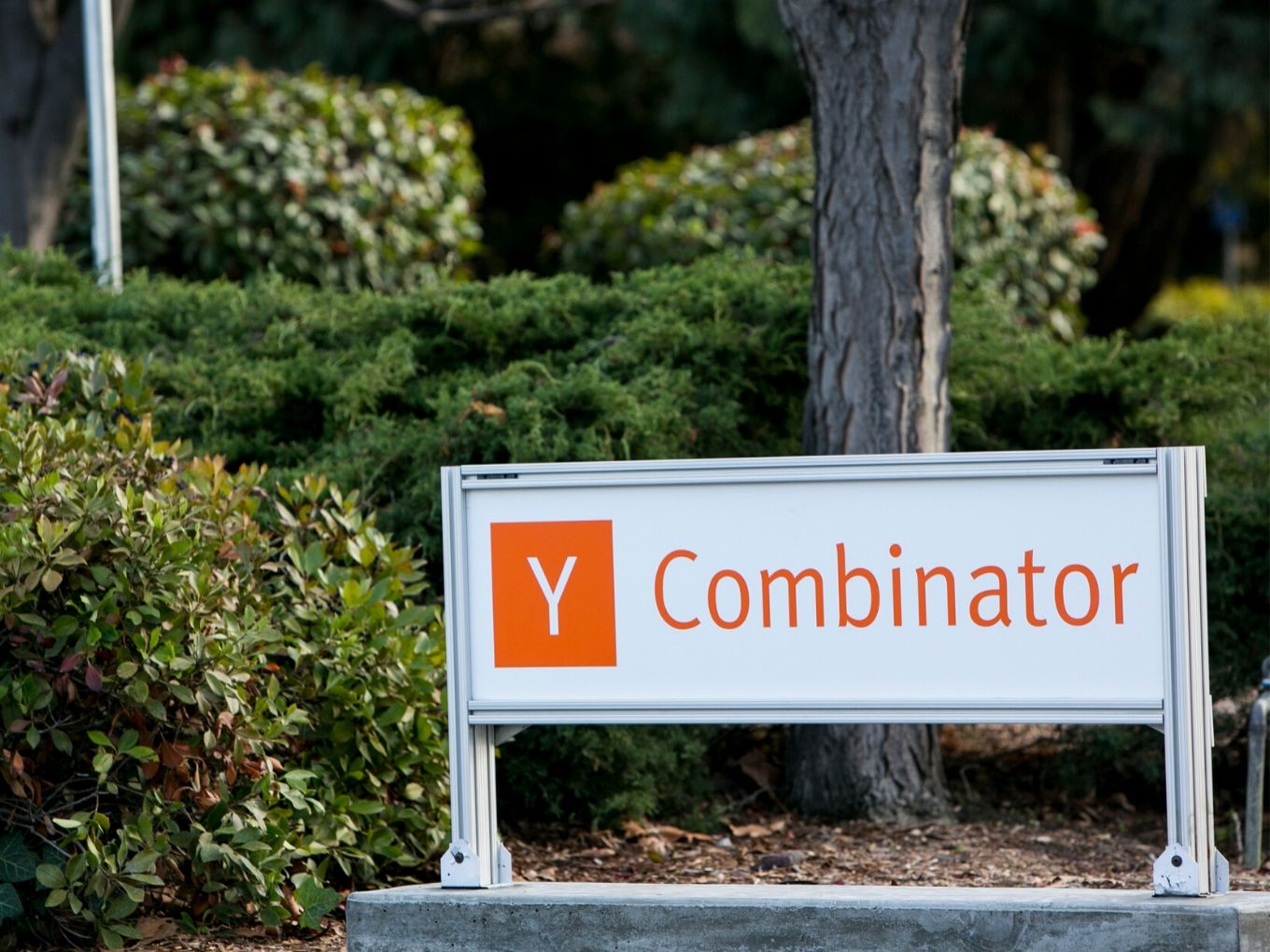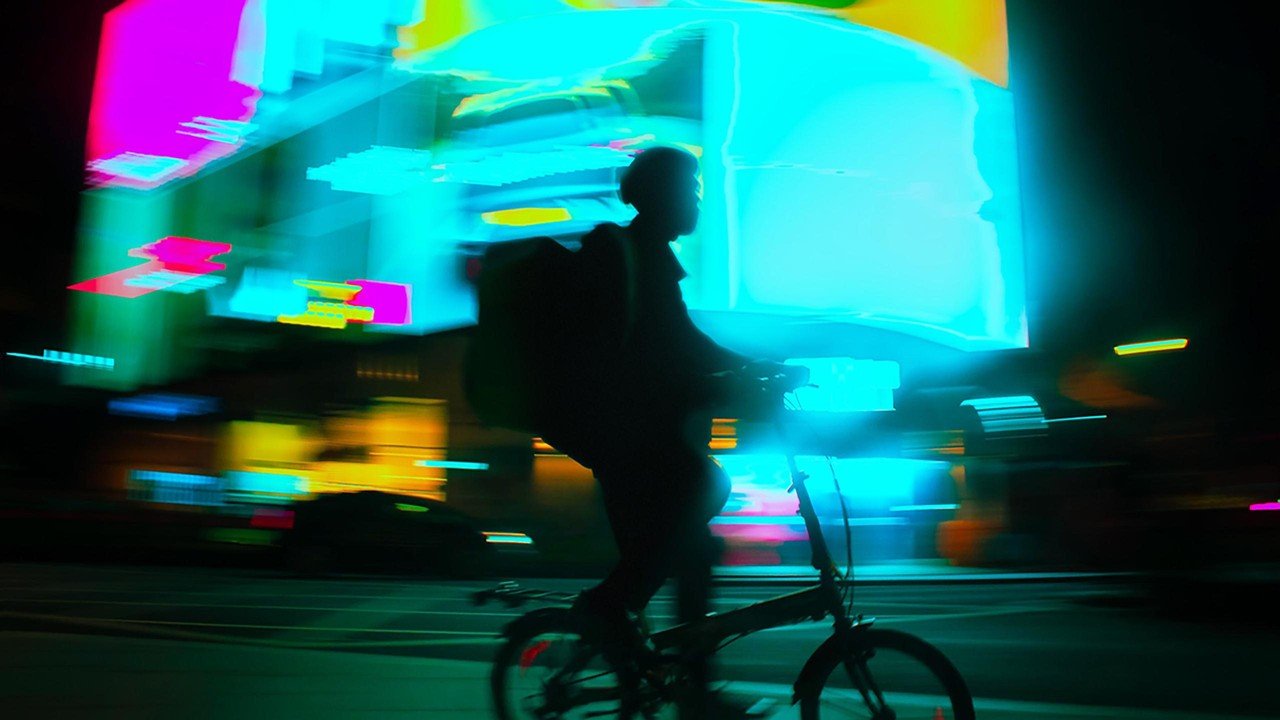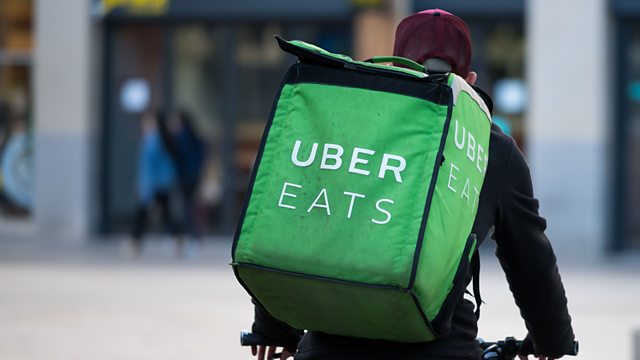
Giuseppe Badalamenti thought he knew everything about selling pizza. Then a client of his food truck turned consultancy, Chicago Pizza Boss, showed him her March invoice from Grubhub.
Customers had paid $1,042.63 for 46 pizzas; the delivery company, which is based in Chicago, had taken $666.09 in commissions and fees. That left the pizzeria with barely enough to pay for San Marzano tomatoes and cheese. “I’m sitting there fuming looking at this receipt,” says Badalamenti, who had never dealt with delivery apps while running his own pizza truck. “But it’s like an open secret. Owners have been suffering in silence, because they’re ashamed, and they think this is what you have to do because this is what everyone is doing.”
He posted an image of the invoice on Facebook, touching off a rebellion among disgruntled delivery service users and workers. A DoorDash driver posted a screenshot of the $4.75 fee the service had offered him to deliver an order 10 miles away. A pizzeria owner with his own fleet of delivery drivers posted a $41,230.47 invoice showing Grubhub taking a 27 percent cut — just for processing orders. And in the comments on another viral post about delivery apps, Collin Wallace, Grubhub’s former head of innovation, wrote that the platforms are “not actually in the business of delivery. They are in the business of finance. In many ways, they are like payday lenders for restaurants and drivers. They give you the sensation of cash flow, but at the expense of your long-term future and financial stability.”
Until recently, most restaurants didn’t think too hard about Grubhub and DoorDash. The math was never appetizing: Profit margins for full-service restaurants are typically around 3 to 5 percent, and delivery app fees tend to hover around 30 percent, so the commission charges clearly weighed against the services. Chefs thought selling a few delivery orders was like offering a pre-theater menu or selling $1 oysters after 10 p.m.: It brought incremental revenue that didn’t involve filling a seat at prime time.

But in the pandemic economy — where some dining rooms that aren’t closed altogether are filling empty seats with mannequins to maintain social distance — takeout is survival. And chefs and owners have quickly been forced to confront the reality that the delivery apps could kill them. (I know firsthand; my chef husband’s Italian restaurant decided to forgo the apps as soon as it learned about the fees.) Restaurant owners and some diners have started a backlash against the apps, in a struggle that could determine whether they make it out of the pandemic.
“These are, like, salt-of-the-earth people, and they’re being taken advantage of,” says Wallace, the former Grubhub engineer, who was also business school buddies with the DoorDash founders. “And there are no repercussions, because these companies spend more every year on legal fees than they will see in their entire life cycles.”
Before the coronavirus era, restaurants were one of the few American industries that seemed to be getting better for everyone: Offerings in most towns became more ambitious, more consistent, more diverse in variety and ethnicity. A critical reason is that dining has been spared the concentration, consolidation and commodification of labor that are hallmarks of just about every other sector. Fully 68 percent of full-service restaurants are independently operated, and while chains do higher volume, the indies’ sales have been growing faster. All those small players make restaurants extremely competitive — and by extension, not very profitable.
Delivery apps are the opposite. Four companies with billions in venture-capital backing — Grubhub, DoorDash, Uber Eats and Postmates — dominate the sector; if Uber consummates its reported deal to acquire Grubhub, it will be three. Grubhub itself is a roll-up of at least 12 separate companies that once competed with one another (including Wallace’s old start-up, FanGo, acquired in 2011).
A class-action antitrust lawsuit filed last month in federal court in New York alleges that those four big players barely compete at all — keeping commissions high and courier wages low. The complaint accuses them of forcing restaurants to guarantee that their prices will be the same whether customers eat there or order over any of the apps, thus absolving the apps from having to compete on price. At the same time, the suit alleges, the companies refrain from infringing aggressively on one another’s geographic turf — which is why Grubhub maintains a 53 percent share of the market in New York, DoorDash claims a 64 percent share in San Francisco, UberEats controls 60 percent of deliveries in Miami, and in most major metropolitan areas, a single delivery app dominates, according to the research group Second Measure.
None of the companies responded to my requests for comment. They’ve objected to attempts in some cities to cap their fees, insisting that their platforms provide needed services and that limiting fees would lower pay for delivery drivers. Grubhub CEO Matt Maloney told investors this month that his company is “bending over backward” trying to help restaurants during the pandemic, and that their profit on orders is only 1.5 percent, even with the 30 percent they charge restaurants. Restaurants would have to pay someone else to deliver their food if they didn’t work with the apps, he said.
But the local fiefdoms the apps have set up keep pay for drivers down, too, because the apps don’t have to offer higher wages to lure people to work for them. Of the $666 in fees Grubhub charged the Illinois pizza restaurant, only $94.99 was earmarked for delivery. By comparison, $206.51 was the generic “commission” charge, the baseline cost of doing business with the app. An additional $231 covered “promotions,” which is basically the cost of not getting buried in the app’s search rankings.
What did these apps do to command such a huge chunk of revenue? A lot of things that hurt restaurants.
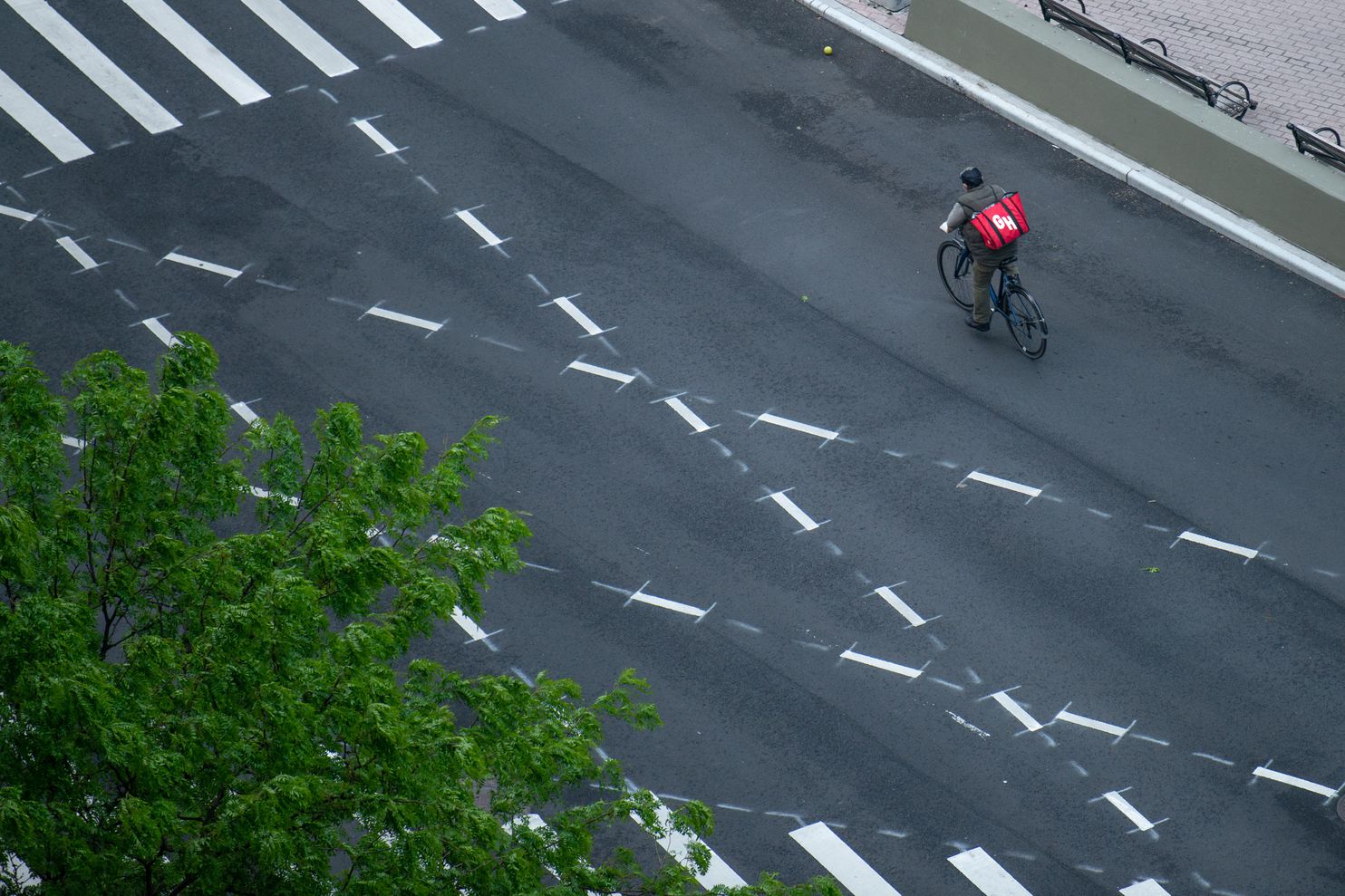
For years, Grubhub accumulated tens of thousands of URLs related to specific restaurants, then used them to set up fake websites that it worked to the top of Google search results. An app called OrderAhead, later absorbed by DoorDash, did the same thing before Google shut the practice down. If a customer searching for a restaurant opened one of these faux websites, they’d be unwittingly directed to the apps. (Grubhub has pointed out that it had obtained permission for the sites in its contracts with restaurants and that it ended the practice of automatically creating alternate websites in 2018.) Grubhub also posted different, app-specific phone numbers for partner restaurants on its websites and Yelp, and used those numbers to charge restaurants commissions for phone calls — even if those calls didn’t result in orders, as the owner of a small chain of Philadelphia Indian restaurants alleged when he sued the company in 2018. A judge ordered arbitration in that lawsuit in December, citing a clause in the restaurant’s contract that mandated arbitration to resolve disputes; Maloney told investors last year that “we believe this is fair” and that restaurants can review phone orders in their accounts to make sure the charges are accurate.
The apps have also developed a reputation for poor performance in every realm a restaurant might consider useful — which is unfortunate now that restaurateurs are relying on them. They’re plainly inefficient: One recent morning, my kids dragged me into a McDonald’s, where no fewer than 15 delivery app drivers were standing around waiting for orders that could have been delivered almost as quickly by five. And for many restaurants, getting app orders is more labor-intensive than taking orders by phone, if the apps aren’t directly integrated into their point-of-sale systems: First, someone must “translate” the order into the restaurant’s computers, then a manager must void the transaction to reconcile the books because the revenue doesn’t show up until later (and with the app’s commission taken out) — and then the books must be reconciled again to account for the food inventory.
Virtually every restaurant person has a nightmare story about the apps botching their menus and hours of operation. Katy Gaertner, a Michigan bar owner who never had a delivery app account, told me that Grubhub posted her old happy hour menu for more than a year after she stopped serving food, despite multiple attempts to get it deleted. Denver restaurateur Carissa Sargent says DoorDash’s restaurant hotline was so overwhelmed the first weekend after the shutdown that it stopped taking calls. She closed her account in frustration the next week — only to get an angry call this month from a customer complaining that she’d waited two hours for an order that had never arrived.
The scary truth is that it may not matter to the delivery apps whether individual independent restaurants survive; their Silicon Valley backers are raining cash on companies like Reef Kitchens, which has a fleet of food trucks in which anonymous cooks prepare meals for an array of fake restaurants exclusively available on the delivery apps. For a few weeks this year, one of those “ghost” kitchens was peddling food on the delivery apps under the name and address of a Michelin-starred Thai restaurant in San Francisco. (The mix-up was supposedly an accident, but it underscored the delivery cartel’s disregard for the reputations of independent restaurants.)
More disturbingly, Wallace, the former Grubhub executive, says the apps are using the troves of information they collect on who eats what, when and where to build menus and scout locations for ghost kitchens — a variation on what Amazon’s private-label division does with mom-and-pop suppliers and distributors that use its platform, as former employees told the Wall Street Journal. (Amazon chief executive Jeff Bezos owns The Washington Post.) “Amazon is in hot water for this now, but DoorDash is doing the same thing with DoorDash Kitchens,” Wallace says, citing the ghost kitchen the company opened in Redwood City, Calif., last fall. The company used data from orders to recruit restaurants that didn’t have a presence in the area to move in and start operating out of a DoorDash-owned-and-operated shared space, selling menu items they believed customers wanted. Wallace supports, in theory, emergency laws recently passed in Washington and other cities to temporarily cap delivery commissions at 15 percent, but he worries that the laws will trigger a “land grab,” wherein the apps — or their venture-capitalist backers — plow cash into shuttered restaurant spaces to open virtual kitchens and cut small operators out of the picture. “DoorDash lost nearly half a billion dollars last year, and [investors] are still throwing money at them,” he says. “No restaurant can compete with that.”
Some restaurant owners with a sudden surfeit of time are working on it. As eateries shuttered en masse in March, the owners of Chicago’s legendary three-Michelin-star Alinea pulled all-nighters to add basic online ordering capabilities to their reservation system, Tock, which counts Rose’s Luxury and the Dabney in Washington among its clients and charges only 3 percent to process transactions. The owners of Shaw’s Ivy and Coney are launching a nonprofit platform called DC To-GoGo with a lineup of 15 to 20 local restaurants, which will limit fees to 5 percent for processing and 15 percent for delivery. Co-owner Josh Saltzman says there are a number of ways restaurants can improve upon the delivery apps, namely hiring their own drivers or pooling one with a neighbor, and encouraging customers to order hours or even days ahead. “We went into it thinking, we want to make sure drivers are making at least $18 an hour and that food is hot,” he says, and when those are the goals, “you realize the system as it’s set up doesn’t work.”
It hasn’t been an easy pitch, though: Business has been too slow for too long, employees are still scared to return to work, “Amazon has tricked everyone into thinking delivery should be free,” and the impossibility of it all has many of his fellow restaurant owners wondering if it makes more sense to just close up shop — at least until the fall. As he reviewed the District’s proposed three-stage plan for reopening, which would limit bars and nightclubs to admitting five people per 1,000 square feet of space, despair set in. “You kind of don’t want to bother until it’s over,” he says.
I know how he feels: After trying and failing to make takeout work without the aid of the apps, my husband’s restaurant is tentatively planning to reopen in September. Before then, I hope his customers don’t find linguine they like more on the Internet. If the delivery apps have their way, though, they just might.
